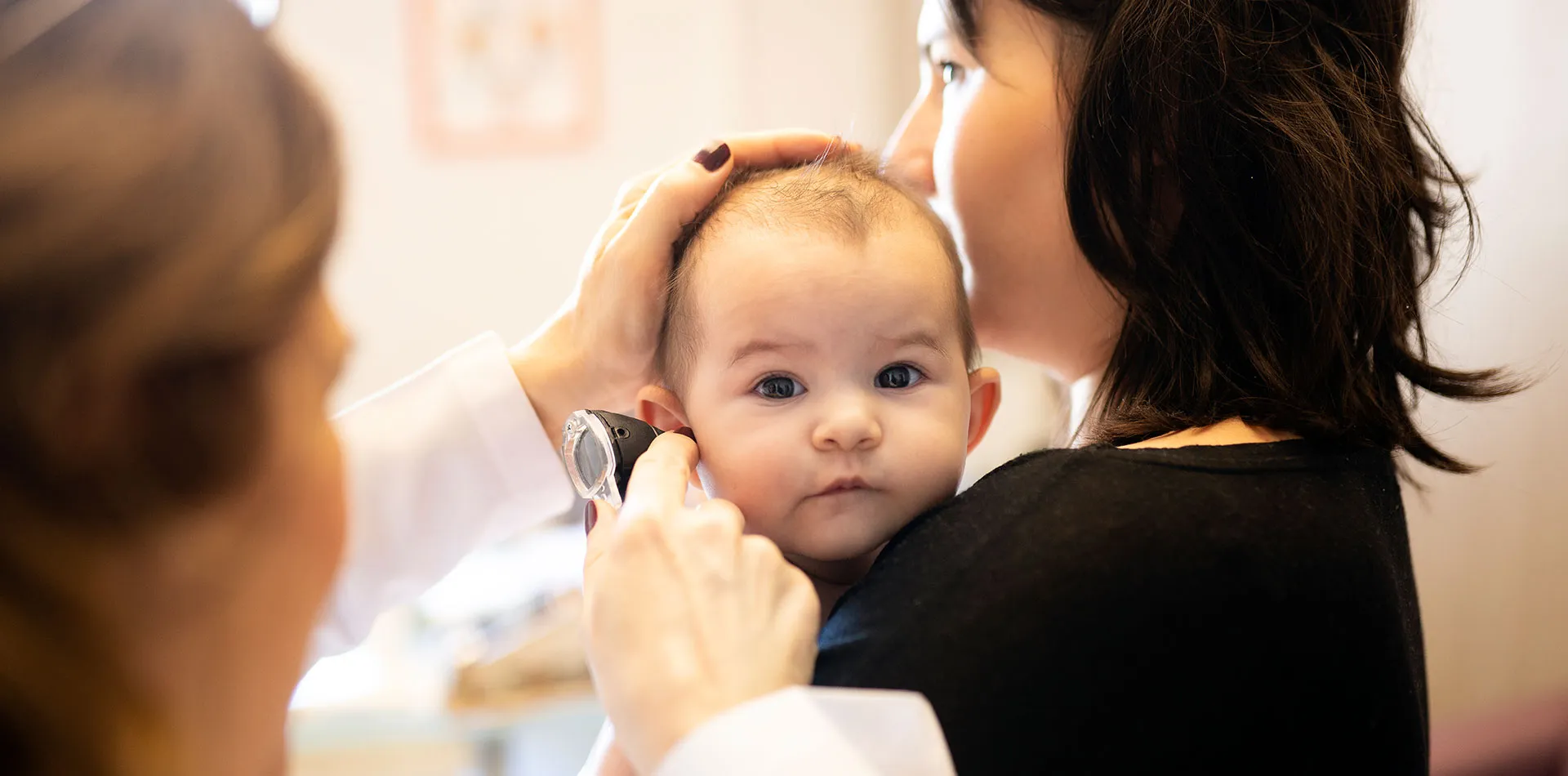
Hearing loss is an important health concern as it can significantly affect a baby’s language and speech development. Today, more hospitals are realizing the importance of practicing hearing screening in the early days of a baby’s life. Early detection can give babies a fair opportunity of developing language, speech, and communication skills useful for the rest of their lives. When a baby is born in a hospital, a series of tests are administered, including Baby Hearing Screening, to evaluate the functioning of various body parts as well as to detect any anomalies. The newborn hearing screening test helps identify babies with hearing issues as early as possible, enabling parents to get the support and advice they need right from the beginning.
Here we have listed some of the frequently asked questions (FAQs) providing information that you need to know about baby hearing test screening.
It’s a part of routine health checks conducted during the first few days or sometimes weeks of a newborn’s life. The hearing screening test uses quick and simple methods to check the hearing of all newborn babies.
Most children hear and listen from birth. They learn to talk by imitating the sounds and voices they hear around them. But that’s not true for all children, as the statistics show that one to three babies in every 1,000 are born with hearing issues. It is not easy to identify that a young baby has a hearing problem. However, this hearing screening test allows babies with hearing anomalies to be identified early. Early identification will help parents to draw support and advice from the doctors for better management of their kids.
The testing procedure, called Otoacoustic Emissions or OAEs, is performed to check the ear’s response to sound. For this test, a small soft-tipped earpiece is placed in the outer part of a baby’s ear which sends clicking sounds down the ear. When an ear receives sound, the inner part, known as the cochlea, usually produces an echo. The screening equipment can pick up this response. This is called the Otoacoustic Emission (OAE) screening test. The OAE screening test only takes a few minutes. A parent or guardian can stay with the baby while the screening test is done.
No. It does not cause any pain or discomfort to a baby. Additionally, the screening test is usually performed when the baby is asleep or settled in the nursery.
Fortunately, only a couple of minutes. The result is communicated verbally to the Pediatrician/Nurse by the Audiologist while also a written report is generated that is enclosed in the baby’s hospital file.
If you have any concerns or questions about your baby’s hearing, contact our Pediatrician or Audiologist at 80024392.
As stated above, detecting hearing loss early helps prevent other complications, such as delays in speech and language. If the baby’s hearing problem goes undetected, it leads to the slow development of speech and language that can make communications challenging for the baby as they grow, and affect their academics and social skills.
قصص المرضى